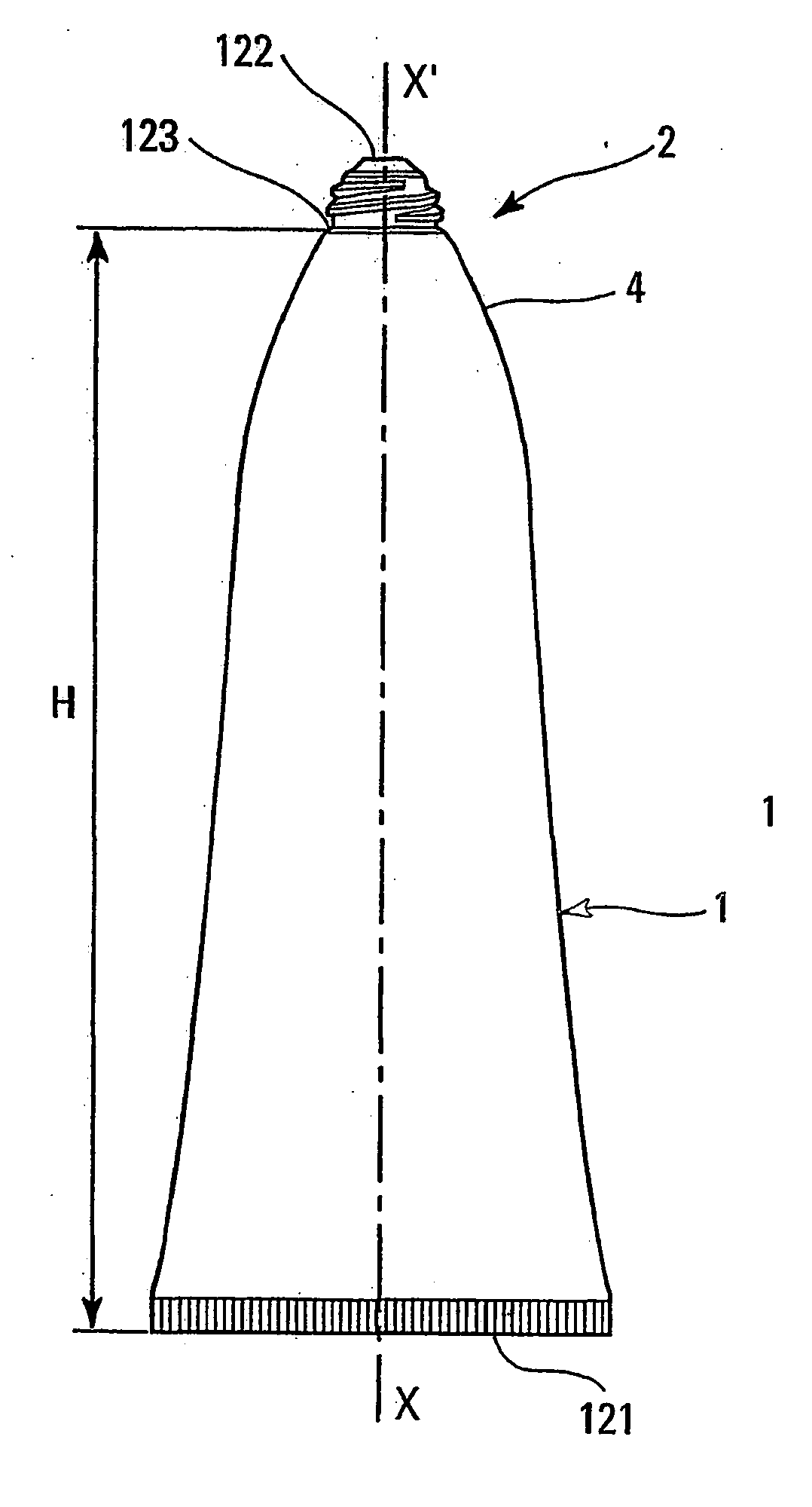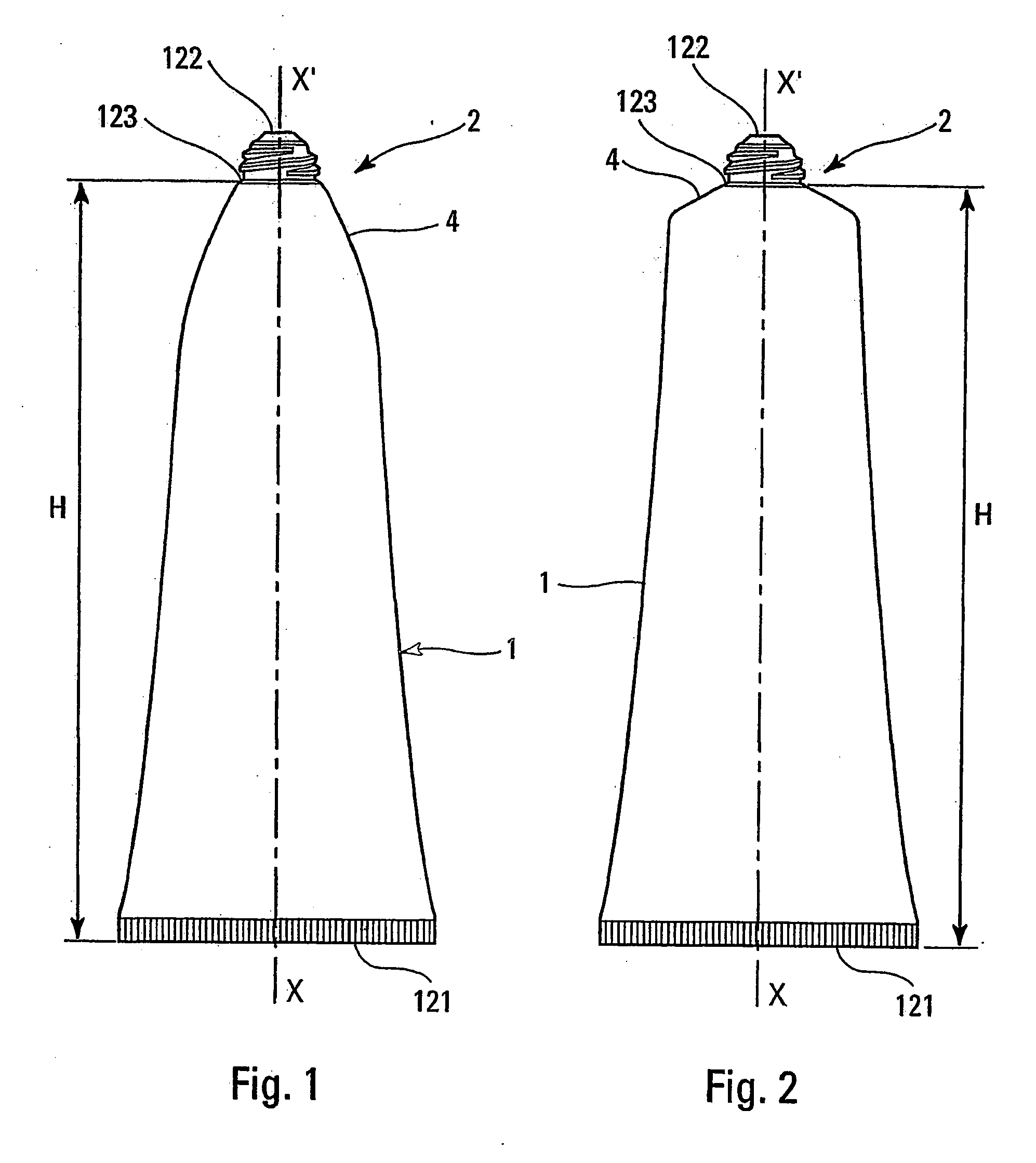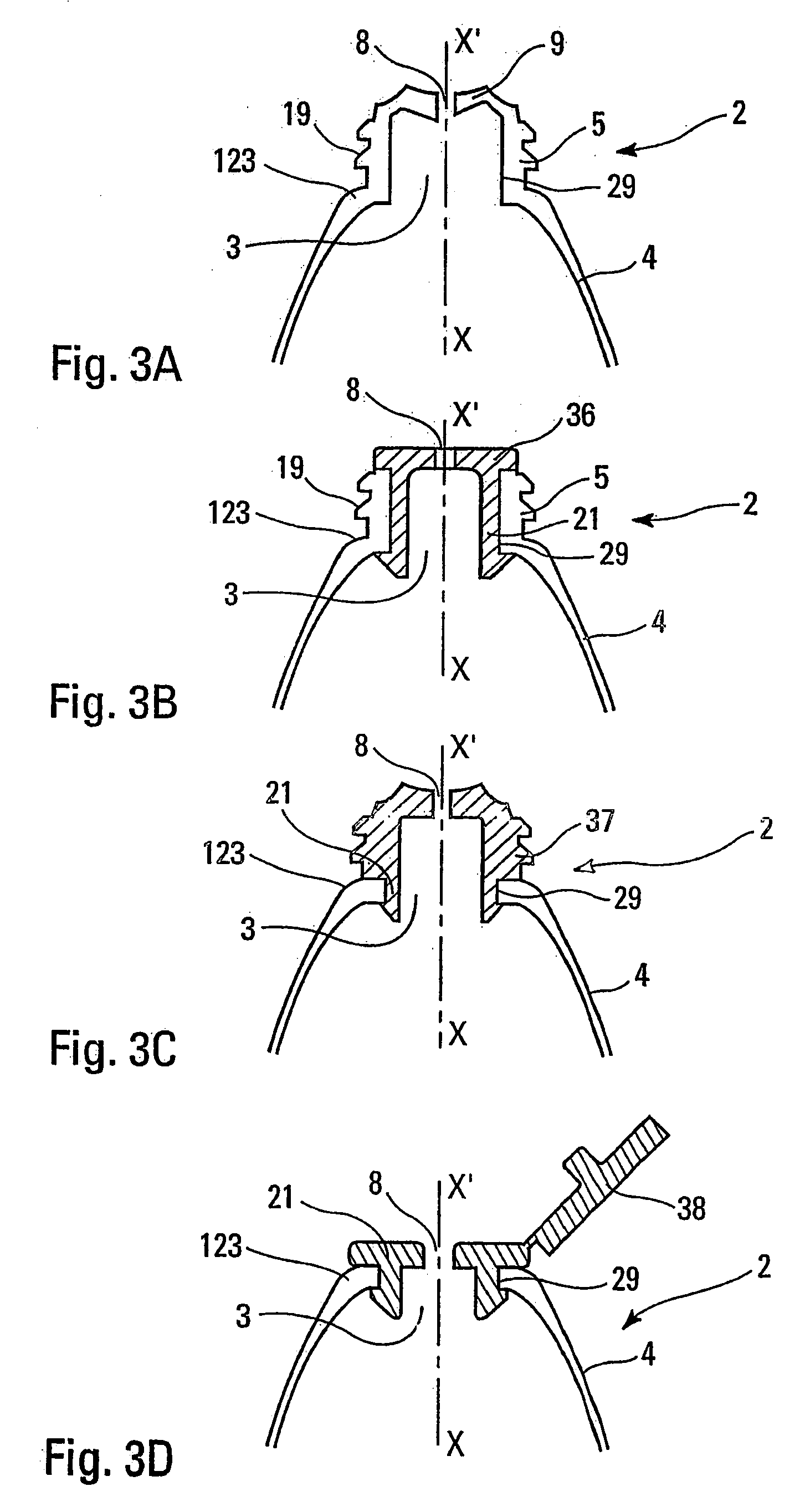Flexible tube made from polypropylene and method for production of said tube
a technology of polypropylene and flexible tubes, applied in the field of flexible tubes, can solve the problems of bursting risk, low use and cost, and the manufacturing of flexible tubes is difficult, and achieves the effects of reducing the risk of bursting, reducing the production cost, and improving the service li
- Summary
- Abstract
- Description
- Claims
- Application Information
AI Technical Summary
Benefits of technology
Problems solved by technology
Method used
Image
Examples
Embodiment Construction
)
[0089] As mentioned previously, the invention concerns a tube essentially consisting of a flexible skirt 1 elongate along an axial direction XX′, and of a head 2 comprising at least one evacuation orifice 3 and a neck 4 forming a radial extension of the orifice and being joined to the skirt 1 along the axial direction XX′, at least the skirt and neck forming a single-piece assembly as shown FIGS. 1, 2, 3A, 3B, 3C and 3D.
[0090] The capacities of the tubes usually proposed on the market lie between 2 and 500 ml. Their skirt length to diameter ratios, as usually found on the market, are between 2, 5 and 6 and are preferably close to 4.
[0091] The invention preferably applies to formats in force on the market, and therefore pays heed to a ratio of skirt length to diameter of between 2, 5 and 6, preferably close to 4.
[0092] Depending upon tube capacity and depending upon the skirt length / tube diameter ratio, the length of the skirt therefore lies between 40 and 200 mm.
[0093] Also, th...
PUM
| Property | Measurement | Unit |
|---|---|---|
| flexural modulus | aaaaa | aaaaa |
| flexural modulus | aaaaa | aaaaa |
| thickness | aaaaa | aaaaa |
Abstract
Description
Claims
Application Information
 Login to View More
Login to View More - R&D
- Intellectual Property
- Life Sciences
- Materials
- Tech Scout
- Unparalleled Data Quality
- Higher Quality Content
- 60% Fewer Hallucinations
Browse by: Latest US Patents, China's latest patents, Technical Efficacy Thesaurus, Application Domain, Technology Topic, Popular Technical Reports.
© 2025 PatSnap. All rights reserved.Legal|Privacy policy|Modern Slavery Act Transparency Statement|Sitemap|About US| Contact US: help@patsnap.com



